You've landed on the right page if you're looking for information about the required depth of deck posts in the ground. We've researched to know how deep deck posts need to be and are here to help.
For deck posts buried underground, they need to be at least 12" below grade. But there's another method to set deck posts that doesn't require them to be buried underground. The deck posts will rest on concrete footers above the ground.
Keep reading so we can tell you more about the depth of deck posts in the ground. This article will also talk about the size requirement for deck footings. We will also answer if you can build a deck without footings. With that said, let's dive right in!
How Deep Should Deck Posts Be?
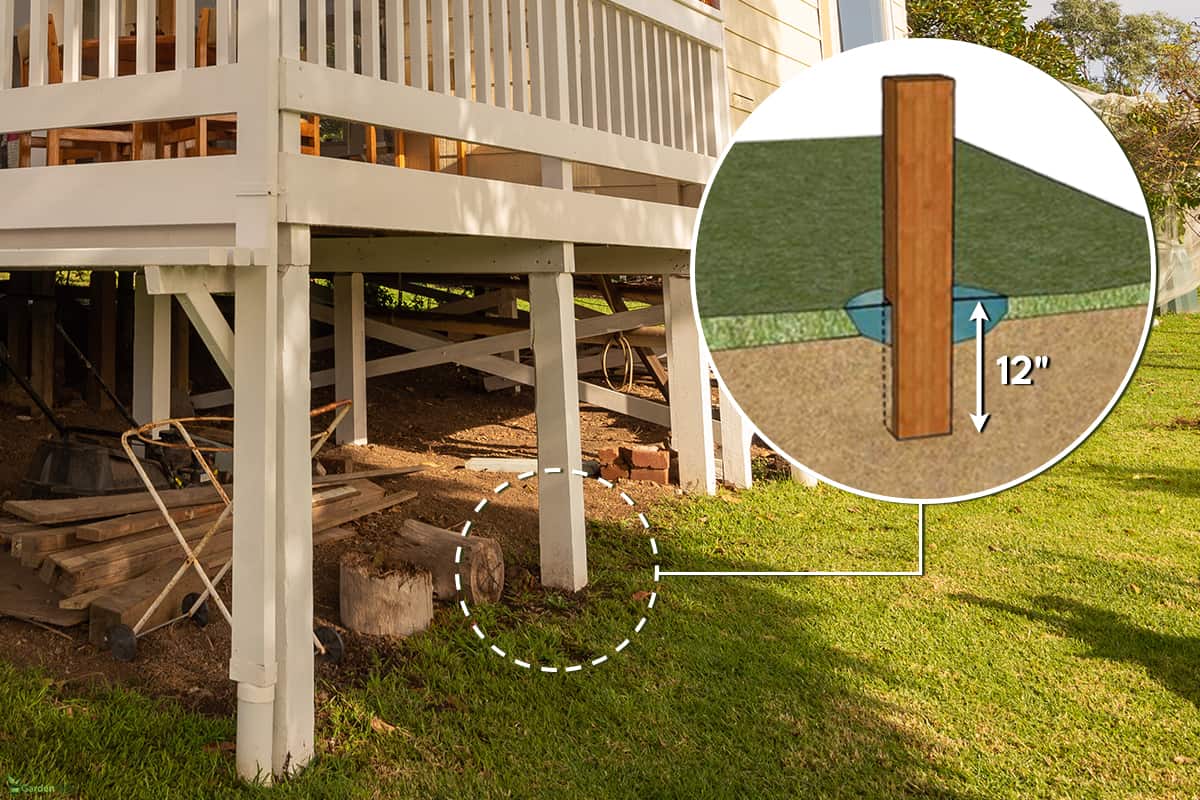
It's nice to have a deck in your yard. It extends your living space. You can enjoy relaxing activities by yourself or with family and friends while enjoying the nice breeze and view of the outdoors.
If you're planning to build your deck, there are many things to consider. First and foremost, you would need a good design and layout to build a deck that's safe, durable, and guaranteed to last for a long time.
Part of the things you need to consider is how deep in the ground the deck posts need to be to give solid support to the structure's weight, primarily since the deck itself is raised on the ground.
With adequate depth, it won't yield or buckle under pressure.
Take note that your deck posts should support the deck itself, the people who will use it, and the furniture you'll be putting on top of it and withstand wind, rain, and other external factors.
That's why you shouldn't disregard this critical detail.
A deck post rests on the footer. It is always the footer that's installed under the ground. It should be at least 12" below grade. But the depth would depend on the frost line in your area.
Frost Line
Water creeps into the soil. When the ground freezes, the water in the soil also freezes but only up to the so-called frost line. Beyond this, water won't freeze anymore as the residual heat from the ground is enough to keep the water at this sublevel from freezing.
Frost is a major concern because as water freezes, it expands and creates enough pressure to lift whatever structure is above it.
This is why the deck footer needs to be below the frost line. When the water underground freezes and expands, it won't affect the deck since the footer is way below the frost line. This will prevent structural damage to your deck.
Frost Depth
The frost depth will vary from place to place. In warmer regions that don't experience freezing temperatures, the depth of their deck posts can be set 12" below the ground.
They don't have to worry about frost heaving. That's why they can comply with the minimum depth requirement.
But for those living in colder regions, the frost depth can reach 96". You can research the frost line in your area or ask your local building inspector about the required depth for your deck posts.
Once you know the frost depth in your area, you need to dig 12" deeper than that so that your deck footing is resting on soil that won't freeze when winter comes.
Methods For Setting Deck Posts
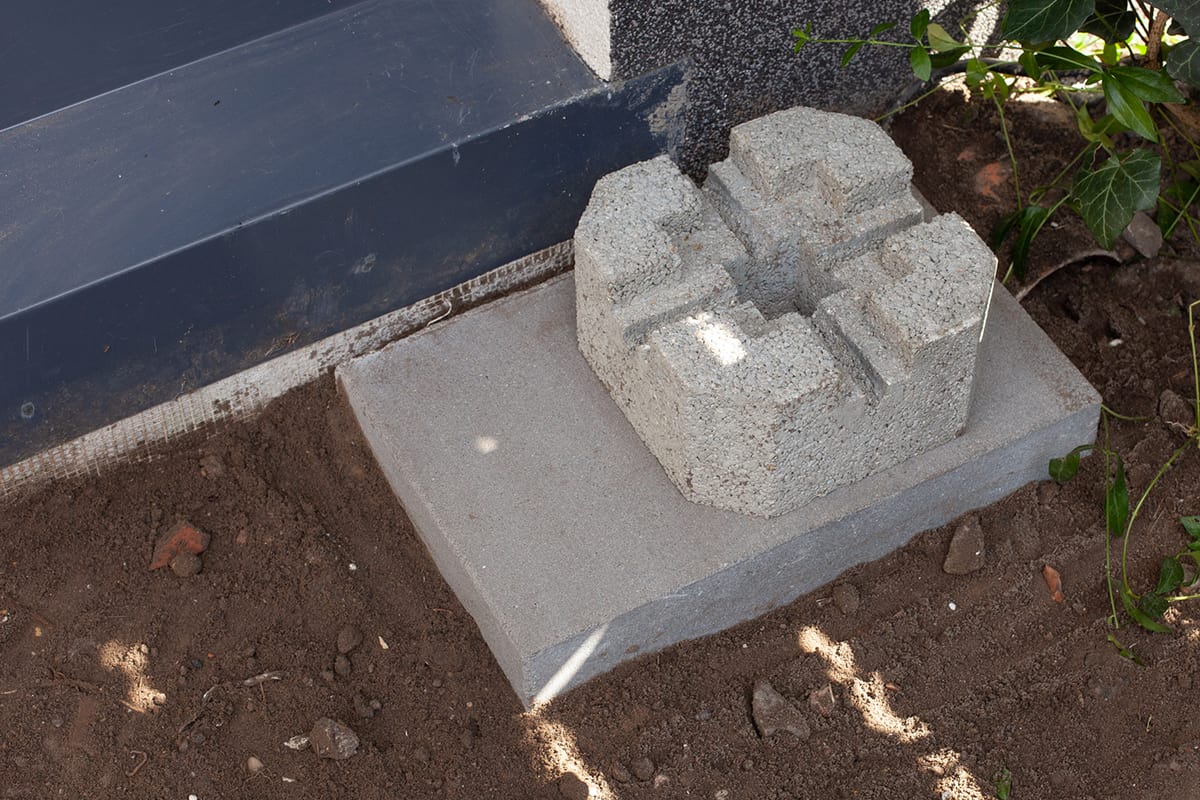
Meanwhile, there are two ways to set the deck post - below and above grade. The method you choose will determine whether you need to add depth to your deck posts.
Below Grade
Deck posts are set together with footers below the ground. Concrete is poured into the post hole, followed by the deck post.
Then gravel is used to fill the rest of the hole around the deck post to ensure that it is dense and the post won't shake or move from side to side.
About a foot of concrete is poured from the bottom before the deck post is set. So, the depth of the post is more or less the depth of the footer minus 12".
Above Grade
The deck post is set on concrete footers above the ground. Only gravel and concrete are used to fill up the post hole.
They should still be set below the frost line, and part of the concrete should extend above the ground to which the deck post will be attached.
Some builders prefer this method since it will help prevent wood rot. Wood is not constantly in contact with moist soil.
The deck post doesn't need to be buried underground when you choose this method. There's no depth to consider here.
In either method, the footers are placed underground while you have the choice to have the deck post buried or not.
What Size Posts Do I Need For My Deck?
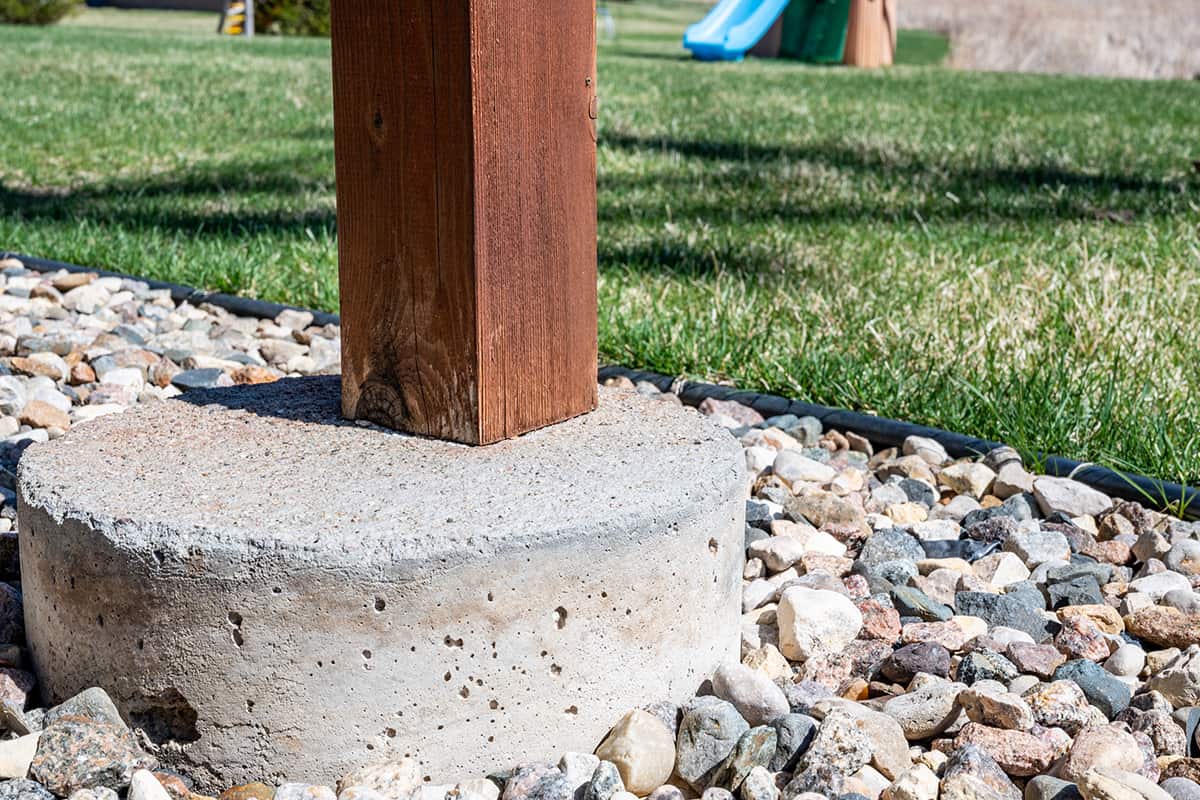
Aside from depth, you also need to consider the size of the deck footings. After all, these are the foundations which your entire structure will rest upon.
Your footings should be wider than your deck posts. Experts recommend that their width be wider by at least 8" than the posts. But it isn't just as simple as this.
Mathematical computations are involved to ensure that the footers can bear the deck's load.
Dead And Live Weights
Deadweight refers to the weight of the deck itself, while live weight includes the weight of the people and furniture, among other things that affect the overall weight of the deck when in use.
Experts have assigned these numbers to these items:
- 40 lbs per sqft for dead weight
- 15 lbs per sqft for live weight
- This will give you a total of 55 lbs per sqft that you will use for your computation.
Tributary Load
This is another factor that'll affect your computation to determine the size of your deck footings.
Since most decks are made as an extension of a part of the house, they only require two footings on the outer corners.
The part of the deck nearest to your house will depend on your foundation for support, and the deck footers will support the rest. Only half of the deck's load is assigned to the footings.
This is called the tributary load.
Let's take a 12X12 deck as an example. You will get 6X6 or 36 sq ft when you divide it into two.
This is the deck's weight that is assigned to the footers. We multiply this to our constant 55 lbs per sqft to account for the dead and live weights. We will then get 1,980 lbs.
After you come up with this figure, you can refer to the chart experts follow for the footing size. In this case, the footing size should be 15" for the clay soil type. But the size can be smaller if you have sand or gravel soil.
Can You Build A Deck Without Posts?
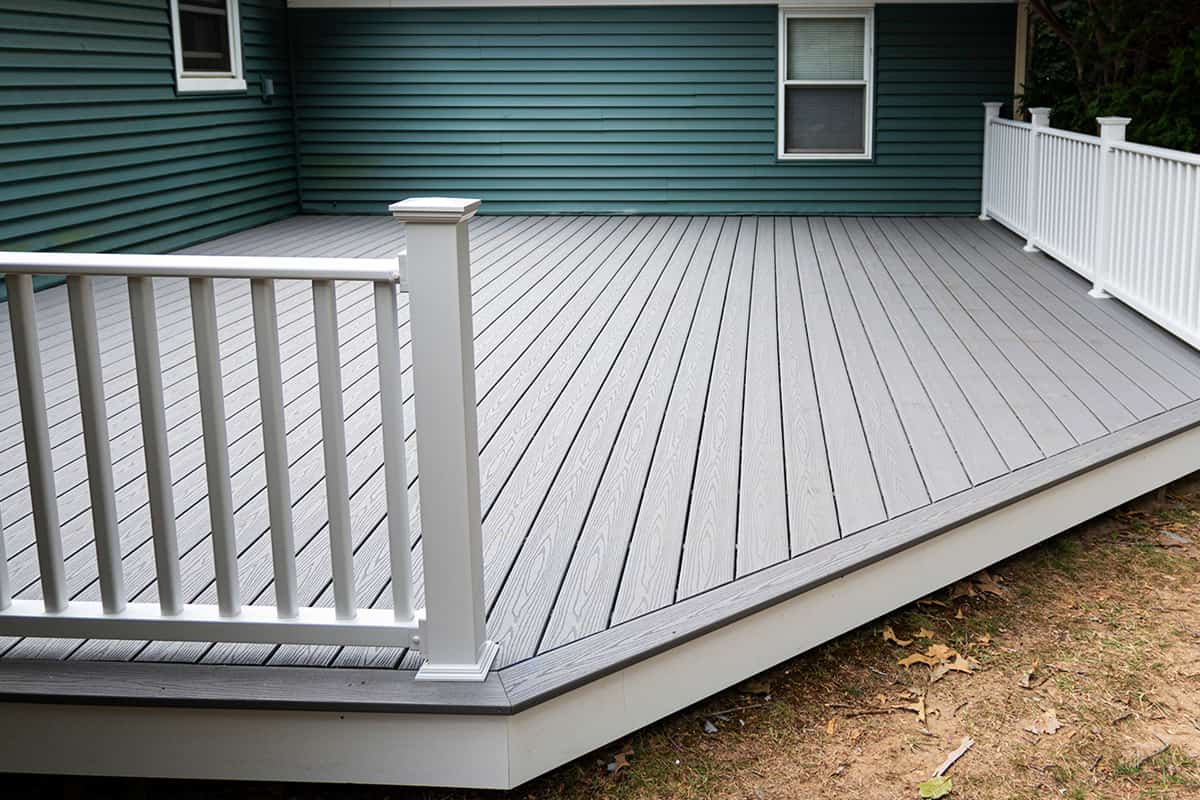
Some would think that digging deep holes is too troublesome. It is labor-intensive, no doubt, especially if you live where the frost line is way below the ground.
This leads them to wonder if they can build a deck without footers.
The short answer to this question is yes, it can be done. Some decks can be built directly on the ground.
Ground-level decks, also called floating decks and free-standing decks, don't require you to build stairs anymore, even guardrails and handrails.
However, you have to check with your city or town's building code if this is allowed, what they consider to be ground-level decks, and what other stipulations they may have regarding this structure.
This is because ground-level decks face different environmental stress since they no longer have underground support. They can be prone to shifting when there is ground movement.
Also, the deck will constantly be in contact with the ground, which can hasten the wood's decay and deterioration. As such, you will need to use a different material if you want your deck to last longer.
Alternatively, you can use deck blocks to elevate the deck a few inches from the ground. These are affordable, but you need to buy as many blocks as needed to evenly support the deck's weight.
Another option is using a deck foot anchor to give you some allowance regarding the height of your deck. You need to screw this tightly on the ground.
Then, you can attach your deck post and proceed to build the rest of your deck.
But you must ensure that the ground where you will build your floating deck is compact, not prone to erosion, and doesn't allow water to pool.
Your deck goes to waste if the ground doesn't meet these conditions.
Our Final Thoughts
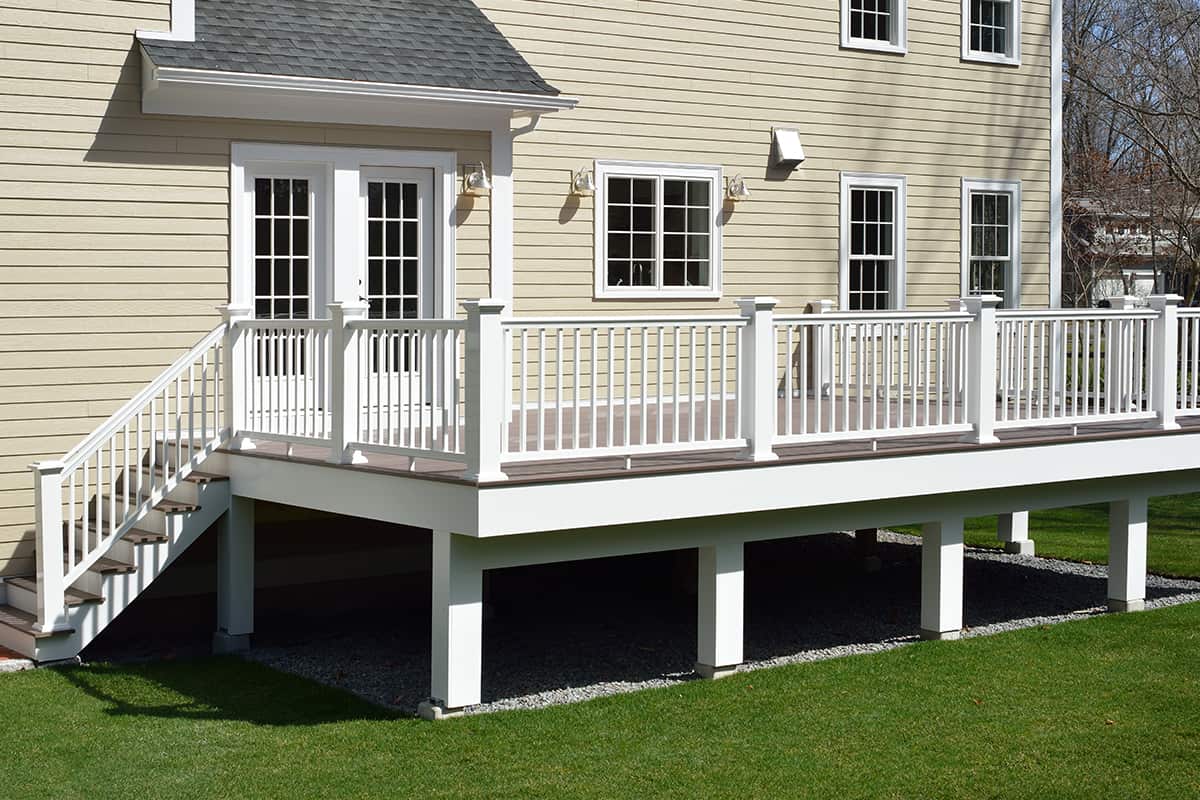
The depth of your deck post underground would depend on the frost line in your area. This works when you want to set your deck post below grade.
And while we have your attention, check out these related articles!
